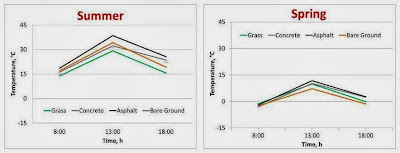Article originally published in Reflections a publication of the UW College of Agriculture and Natural Resources (Publication date: June 2013; pages 40-42)
Access the issue online at:
http://www.uwyo.edu/uwexpstn/publications/reflections/reflections-2013-web.pdf (4.2MB)
* * * * * * * * * * *
Researchers generate crop growth patterns for Wyoming farmlands from satellite images
Under precision-agriculture or site-specific management practices, farmers split fields into discrete zones based upon underlying soil properties and past crop growth patterns. By dividing the field into zones, a farmer can devote more resources to zones with medium to low growth to increase output.
Remotely sensed data (images) of crop growth acquired during the growing season in multiple years are essential to understand and map differences in crop growth through time. Data collected in the infrared region (invisible to human eyes) are particularly useful to distinguish differences in crop growth in a field.
Advances in technology are enabling us to acquire remotely sensed images using sensors mounted in balloons, unmanned aerial systems, or farm vehicles (tractors and trucks, for example).
Images collected by Landsat satellites date back to the early 1970s and comprise the longest and one of the most complete collections of remotely sensed images. Since these images are acquired once every 16 days, farmers can use them to monitor growth patterns during one or more growing seasons.
In 2008, the U.S. Geological Survey (USGS) opened the entire Landsat image archive free to users. Now any user can download images directly from the USGS websites http://glovis.usgs.gov or http://earthexplorer.usgs.gov.
 |
| Infrared images acquired by a Landsat satellite show changes in crop growth during the 2007 growing season. Crops with high growth (or vigor) appear bright red due to more reflection in the infrared region. Darker shades of red indicate medium- to low-growth areas. Harvested areas and bare ground appear in shades of green and blue. |
University of Wyoming students enrolled in the remote sensing for agricultural management course are taking advantage of this to monitor fields in Wyoming or their home states.
Monitoring crop growth in one growing season
Carson Hessenthaler, agricultural business major from Lovell, compared sugar beet growth in a field near Lovell that had uneven soil fertility. Using three Landsat images acquired at different times of the year, he tracked growth in areas that showed poor, medium, and high growth at the start of the growing season (Figure 1).
 |
Figure 1: Landsat images revealed differences in the sugar beet growth for the
2011 growing season at a farm near Lovell. |
His analysis revealed that areas with high-, medium-, and poor-growth patterns at the start of the season stayed more or less same until the end of the season. However, areas with poor growth at the start had relatively more growth, albeit small, throughout the season and ultimately narrowed the gap with the other two categories.
Mapping crop growth between growing seasons
Matthew Thoman, rangeland ecology and watershed management major from Riverton, mapped winter wheat growth patterns in non-irrigated fields east of Cheyenne. Using Landsat images acquired in April, May, and June of 2007 and 2009, he mapped winter wheat growth for the two growing seasons (Figure 2).
 |
Figure 2: Variations in the winter wheat growth in non-irrigated
fields near Cheyenne in 2007 (left column) and 2009 (right column).
Each square represents 0.22 acres (900 square meters) on the ground.
Dark green to light green correspond to high to medium growth.
Yellow and brown colors correspond to low and no growth. |
Combining data from three Landsat images acquired during each growing season, he was able to see that between 2007 and 2009, the area under high growth increased from 1.3 to 5.5 acres shown in dark green (Field 1). This increase occurred mostly in areas that had medium growth in 2007. Some of the medium growth areas of 2007 had lower growth in 2009 (yellow); however, this decline was noticed along the edges.
The second field showed increases in high and medium categories and decreases in low and bare ground categories. While no part of this field was classified as high growth in 2007, four acres witnessed high growth in 2009. On the other hand, areas of low growth decreased from approximately 11 acres in 2007 to 5 acres in 2009.
These examples demonstrate how information derived from Landsat images can be used to identify areas where crop growth varies between years. Farmers and crop consultants can use this information to devise suit-able management plans for increasing crop growth.
Tracking changes through multiple years
Availability of free Landsat images provides numerous other possibilities for monitoring growth in Wyoming croplands. For example, farmers can adapt Hessenthaler’s technique and obtain images from several years to analyze crop growth prior to its maturity.














